Best enduro mountain bike – we test the top options for racing or burly trail and gravity blasting
The best enduro MTBs are fast, relatively light and comfortable enough to ride all-day, here are our expert picks
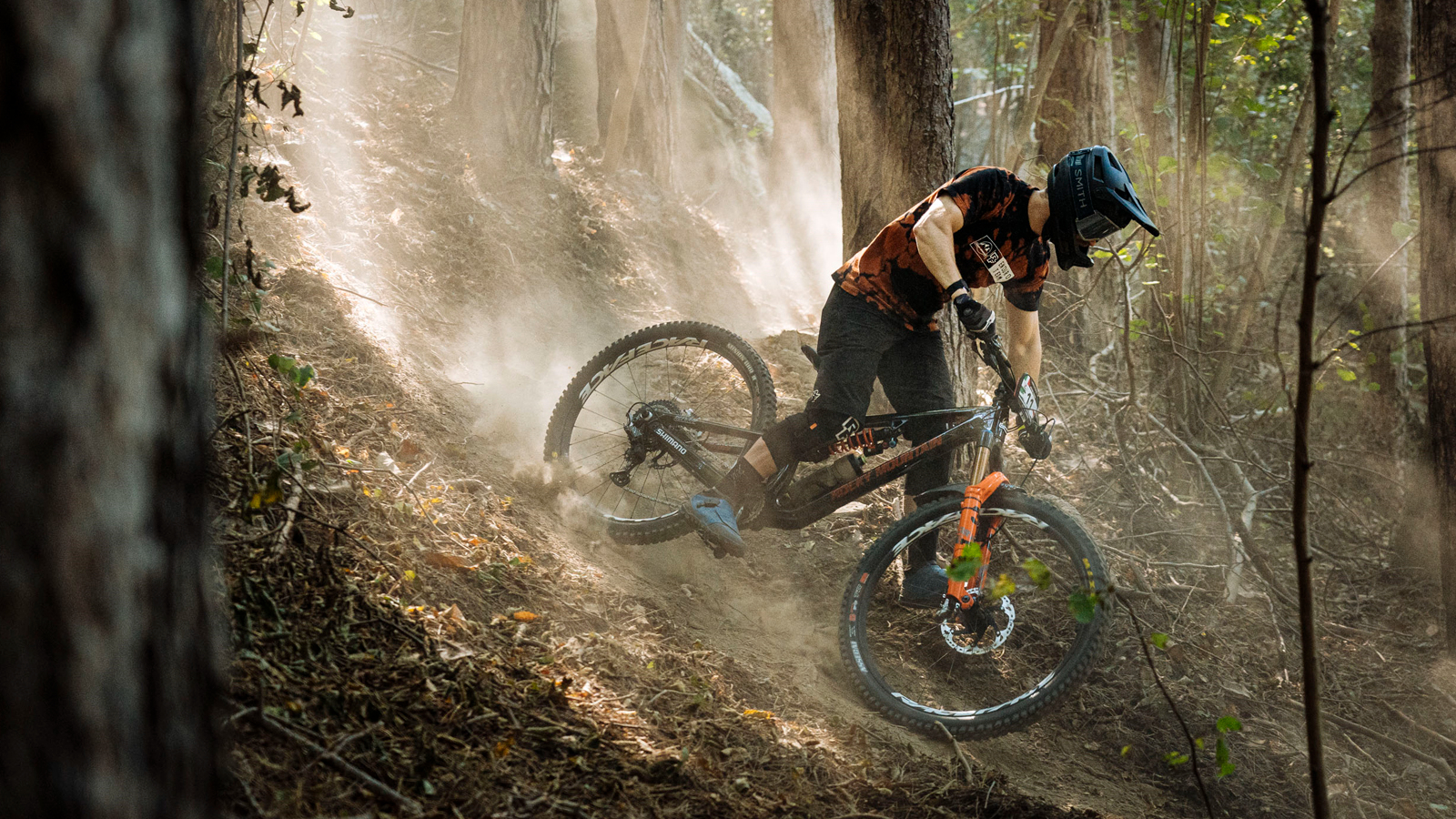
Enduro is a popular mountain bike discipline as it combines all the best elements of cross-country racing and downhill mountain biking. The best enduro mountain bikes blend an efficient pedaling stroke with boundary-pushing geometry and suspension performance. Enduro races consist of a number of timed (mostly downhill) sections combined with transition sections in between, so bikes need to able to be ridden up hills as well as down. As such, mountain bike engineers and component designers have supplied an entirely new class of bikes and gear to cater to enduro racing's unique demands and produced some of the best mountain bikes in terms of versatility and capability.
Enduro mountain biking has its origins in the French Alps, it was here that riders formulated an all-day racing format that prioritized descending. When the Enduro World Series (EWS) started back in 2013, racing was dominated by 27.5-wheeled bikes with 150mm of travel. There's now a selection of wheel sizes – 29-inch or mixed wheel 'mullet' bikes with a 29-inch wheel up front and 27.5 to the rear. While suspension travel is usually 160 to 180mm. It almost goes without saying, but enduro bikes can have electric motors – for more on them, see our best e-MTB guide. And if maybe you're considering something less burly, our guide to the best trail mountain bikes will help you there.
As bikes need to be efficient on the ups and as fast as possible on the downhills, this means there is a lot to consider when picking the best enduro mountain bike, but our experts have rated and reviewed the finest options around.
If you are unsure what to look for when shopping for a new enduro bike, jump to the bottom of this article to find out how to choose the best bike for you.
Best enduro mountain bikes
Why trust BikePerfect
1. Best enduro bike overall
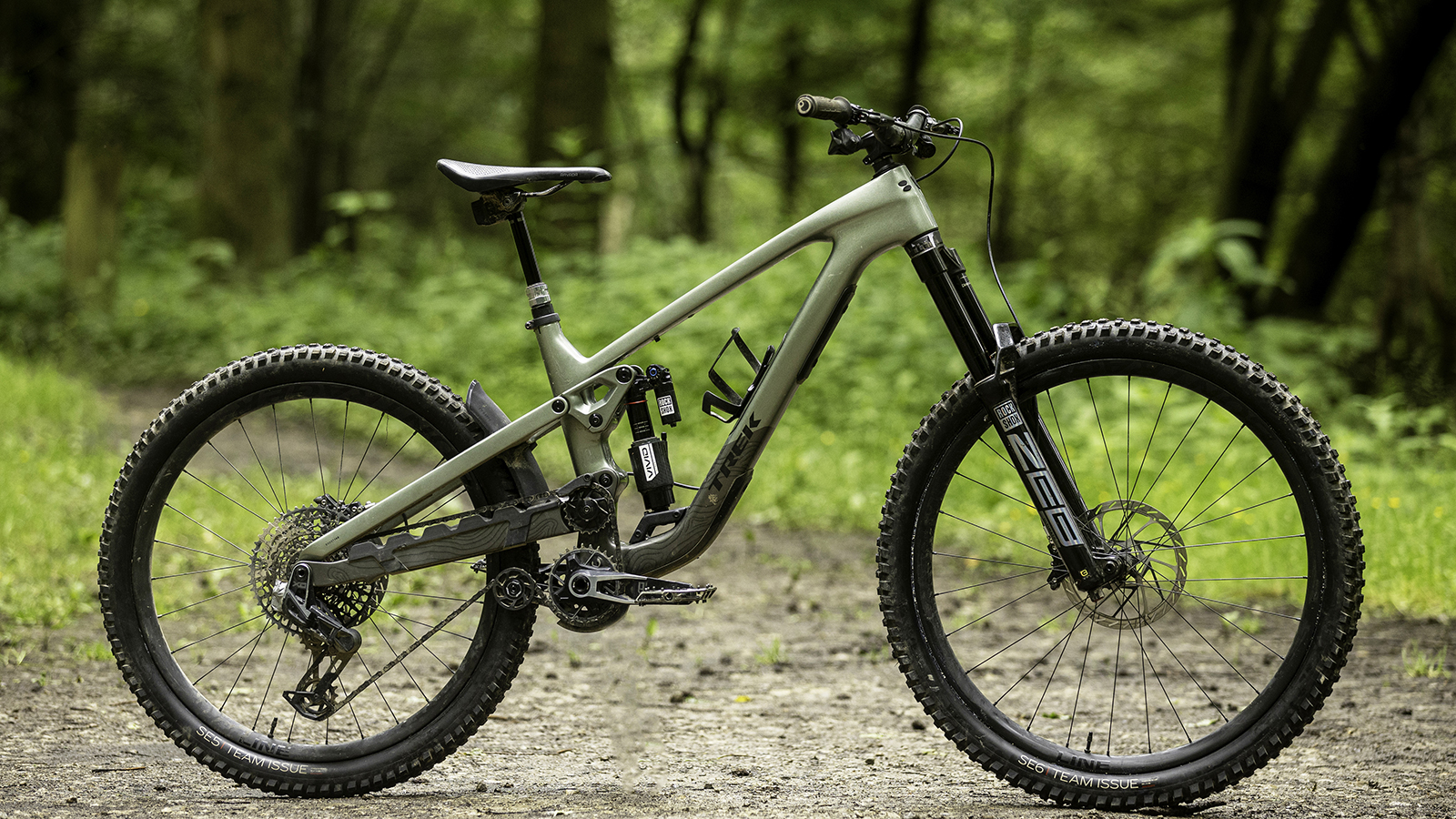
Specifications
Reasons to buy
Reasons to avoid
The sixth generation Slash 9.9 brings the latest tech from downhill racing with a high pivot and idler suspension design, and upping travel to 170mm at both ends. It's still designed for efficient pedaling and climbing, however, making it a versatile, all-rounder enduro rig.
As with previous incarnations, the Slash 9.9 is built with an OCLV carbon frame and an ABP rear pivot. It comes with a mullet setup, but also the ability to switch to 29in wheels front and rear, like the older Slash. Trek has paired the RockShox Vivid Air Ultimate shock with the Zeb fork up front, and used the latest SRAM T-Type Transmission with a 10-52t cassette, along with SRAM Code SLR 4-piston brakes.
Our tester Mick Kirkman, was really impressed with the Gen 6's ride quality, but was disappointed with the performance of the Bontrager wheels and tires, and also had a few issues with the added complexity of the idler and guide setup.
Overall, however, Mick found the new Slash engaging and tons of fun. He summed up: "A major highlight is how smooth the bike feels in terms of bump swallowing and vibration damping, without ever losing a sharper edge and enough reactiveness to push on and play harder. Pedaling zip and climbing prowess is decent too, especially for a bike carrying some extra weight due to a high pivot design and added drivetrain parts."
To get the full lowdown, read our complete Trek Slash 9.9 Gen 6 review.
2. Best long travel enduro bike
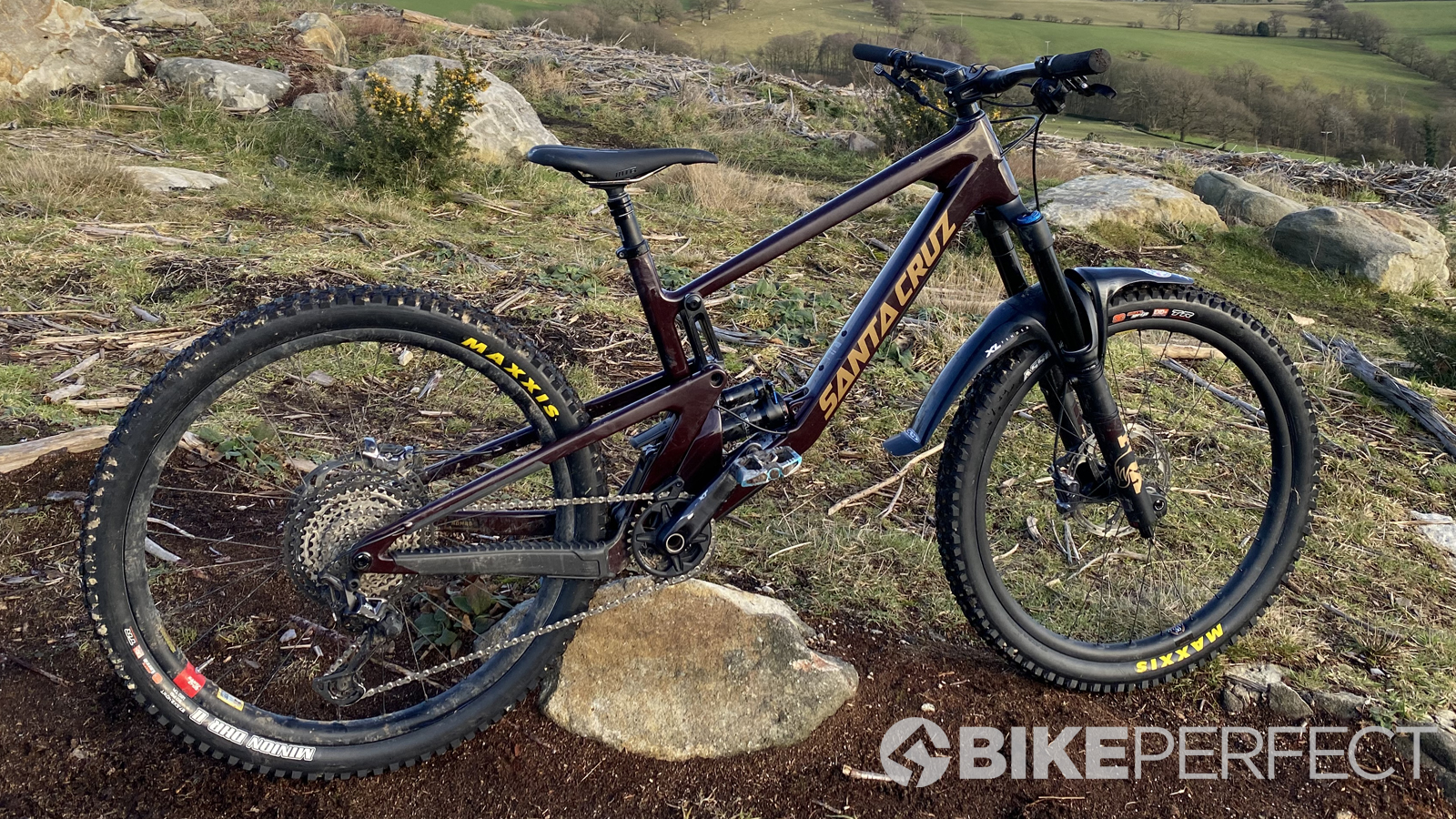
Specifications
Reasons to buy
Reasons to avoid
Santa Cruz has an impeccable pedigree in gravity racing and popularized the long-travel 29er with its original Tallboy LTC back in 2012. A radical reconfiguration of Santa Cruz’s VPP suspension system appears on most of the Californian brand's latest trail bike models, including the 170mm Nomad.
Rolling on 27.5-inch wheels, the Nomad isn't necessarily a pure enduro race bike as long-travel 29ers have dominated that space. However, the bike is essentially a single-crown downhill bike that can make easy work of any rough and steep trail. That's combined with an ability to pedal back up the mountain without hiking or shuttling.
The bike we tested used Shimano XT gearing and braking along with Santa Cruz's Reserve 30mm rims. All of that suspension travel was taken care of with a Fox 38 fork and a RockShox rear shock.
Guy Kesteven, our test pilot did wonder if this 170mm monstrosity would be too much bike for his local trails, but it turned out that the Nomad has an incredible ride quality that doesn't get bogged down despite the big travel nature of this bike.
He summed up this agile yet rapid bike as, "undeniably pricey but an outstanding mix of long travel suspension, surprisingly playful pop, practical detailing and lifetime-warrantied frame and wheels, making the latest Nomad a total riot on the rowdiest trails". Read his full Santa Cruz Nomad review to find out more.
3. Best shorter travel enduro bike
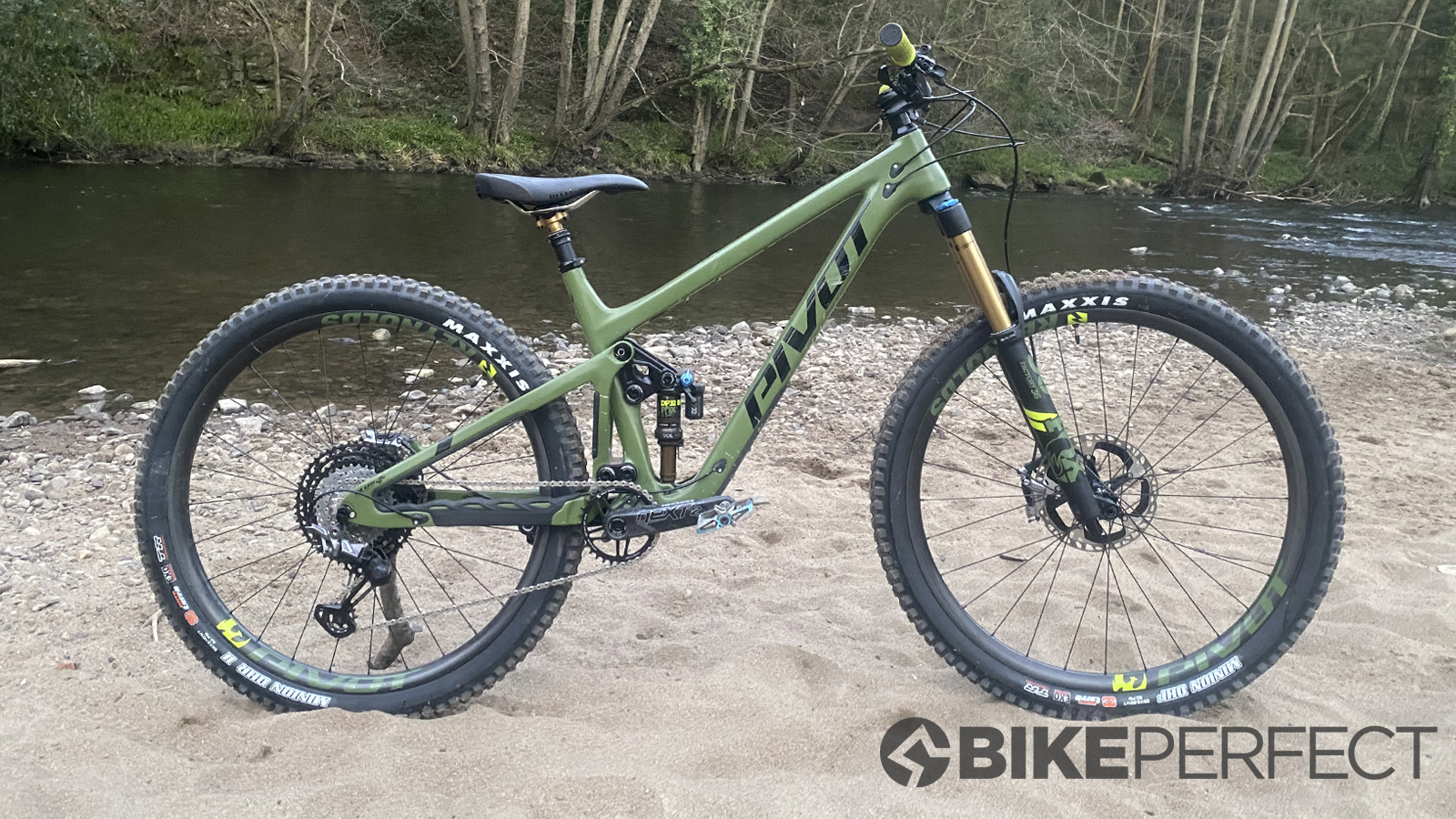
Specifications
Reasons to buy
Reasons to avoid
There’s no escaping the top-end price of the Switchblade. Hit the trail though and that immediately all seems forgivable. Its ability to turn every section of trail into an ultra high definition pop, rip and power through playground is as good – if not better – than any other bike we’ve ridden.
While it doesn’t feel like it has more rear travel than 142mm, the quality of flat-out flow and tight power response is exceptional. The seemingly unbalanced front (160mm) and rear (142mm) travel actually syncs superbly and while they aren’t the most radical numbers, the geometry is perfectly poised for the vast majority of real-world riding. It’s also one of the few bikes where you can still swap to plus-sized wheels if that’s your thing, but for most, it’ll be the delicious detailing and visceral, dynamic speed of the Switchblade that makes it something very special.
Pivot offers the Switchblade in a number of build options to cater to Shimano or SRAM preferences and budget limitations although even the 'budget' XT build requires some significant finances.
In summing up the Switchblade in his full review, our tech ed Guy Kesteven said: "A brilliantly vivid yet smoothly controlled, high-velocity technical trail bike for the few who can afford it, but not without some potentially irritating aspects."
Read his full review for an in-depth opinion on why we think the shorter-travel Pivot Switchblade Team XTR makes a great enduro bike.
4. Best confidence-inspiring enduro bike
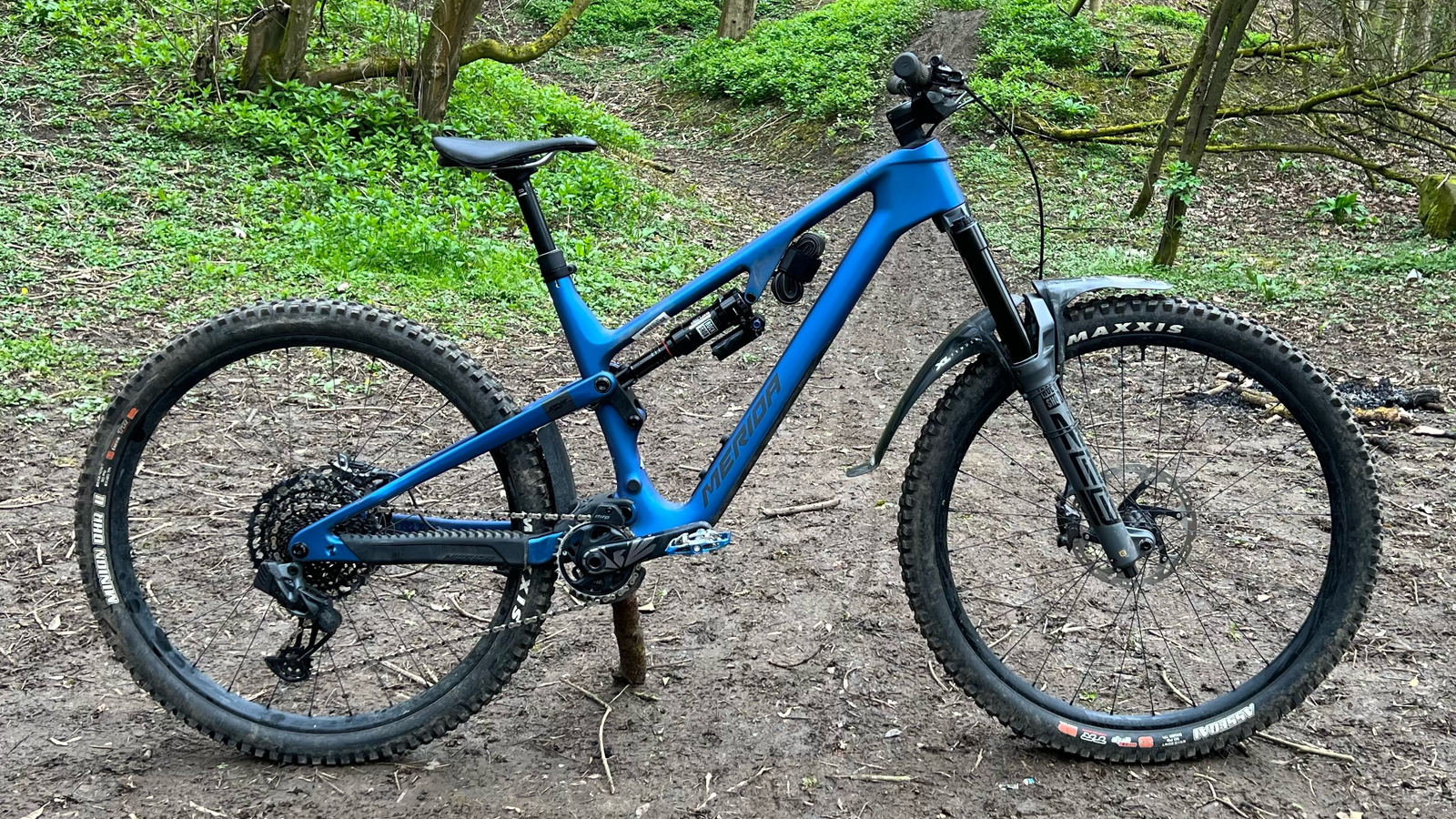
Specifications
Reasons to buy
Reasons to avoid
Merida’s radically redesigned One-Sixty offering takes a blend of downhill MTB, XC and triathlon, and delivers a balanced, easily rideable and flat-out fast, fun enduro steed.
Merida twists the norm right from the start. Rather than the usual XSmall to XLarge sizing, the One-Sixty rephrases that to XShort to XLong. That covers a massive reach range from 415mm to 525mm, but also includes deliberately short seat tubes and head tubes, so shorter riders who want a long bike won’t get jacked up too high.
To stop the monster reach feeling too barge-like, the chainstay length on the Long and Extra Long bikes is 438mm. Extra Small, Small and Mid-bikes come with a 27.5-inch rear wheel as standard and a seatstay flip-chip that brings the back end to 434mm. While the 64-degree head angle is par for the enduro course these days, the steep 79-degree effective seat angle is the kind of radical move you generally only find from small ‘edgy’ brands, not one of the world’s largest bike manufacturers.
The bike also comes with a five-year warranty that even covers 'Cat 5' Bike Park, DH and Enduro Racing use.
In his review, our technical editor, Guy Kesteven, said, "Merida’s latest One-Sixty consistently put me in the right position on the bike and the trail. Perhaps most importantly, it put me in the right frame of mind to enjoy its easy speed without feeling robbed of the fun or interaction of quick sprints or playful pops at every opportunity. While some riders might miss extensive geometry adjust options, the bike felt great as it came, and the ability to add a coil shock, turn it into a mullet wheeled setup or even a mid-travel trail bike adds bigger picture versatility."
Check out our full Merida One-Sixty 8000 review for more info. Merida has used much of the same thinking in these bikes in its latest generation of e-enduro bikes. For more on them, see our eOne-Sixty 675 first ride review.
5. Best steel-framed enduro bike
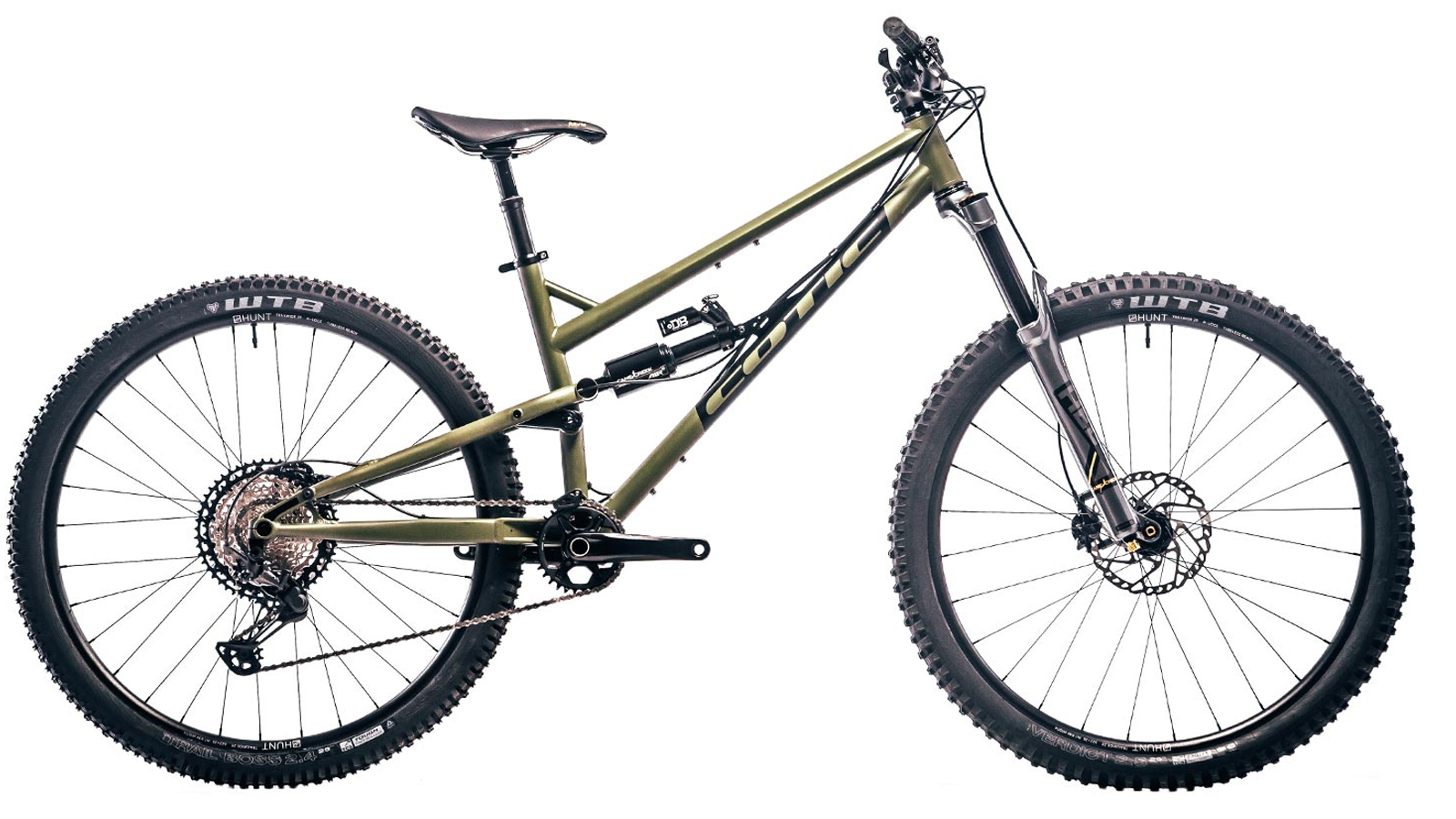
Specifications
Reasons to buy
Reasons to avoid
If you want total hard-edged precision, or lightweight, long-travel trail agility then the RocketMax isn't for you. The radical geometry with its need to take the longer way round tighter sections won't suit everyone either and it's the first bike too long to pass the 'fits straight in the back of Guy's van test'. The steel tube aesthetics with their transverse pipe section terminals won't float the boat of fat carbon fans either.
However, as Guy Kesteven says in his full review: "If you want a bike that delivers all the damping and shock shrugging advantages of steel, while retaining a warm sense of spring but never twanging too far offline then it's fantastic." The geometry and key componentry have been carefully curated to take the unshakeably grounded and gripped feel from tire knob to bar tip.
The result is an enduro tank that stays utterly calm and confident well beyond our test team's normal panic points and takes up a position as one of the fastest gravity bikes we've ridden – regardless of material or origin. Additionally, it pedals well enough to hide a lot of its weight and stays enjoyably engaging on less taxing trails.
Read our full review of the Cotic RocketMax for more details on this steel shred sled.
6. Best enduro bike suspension system
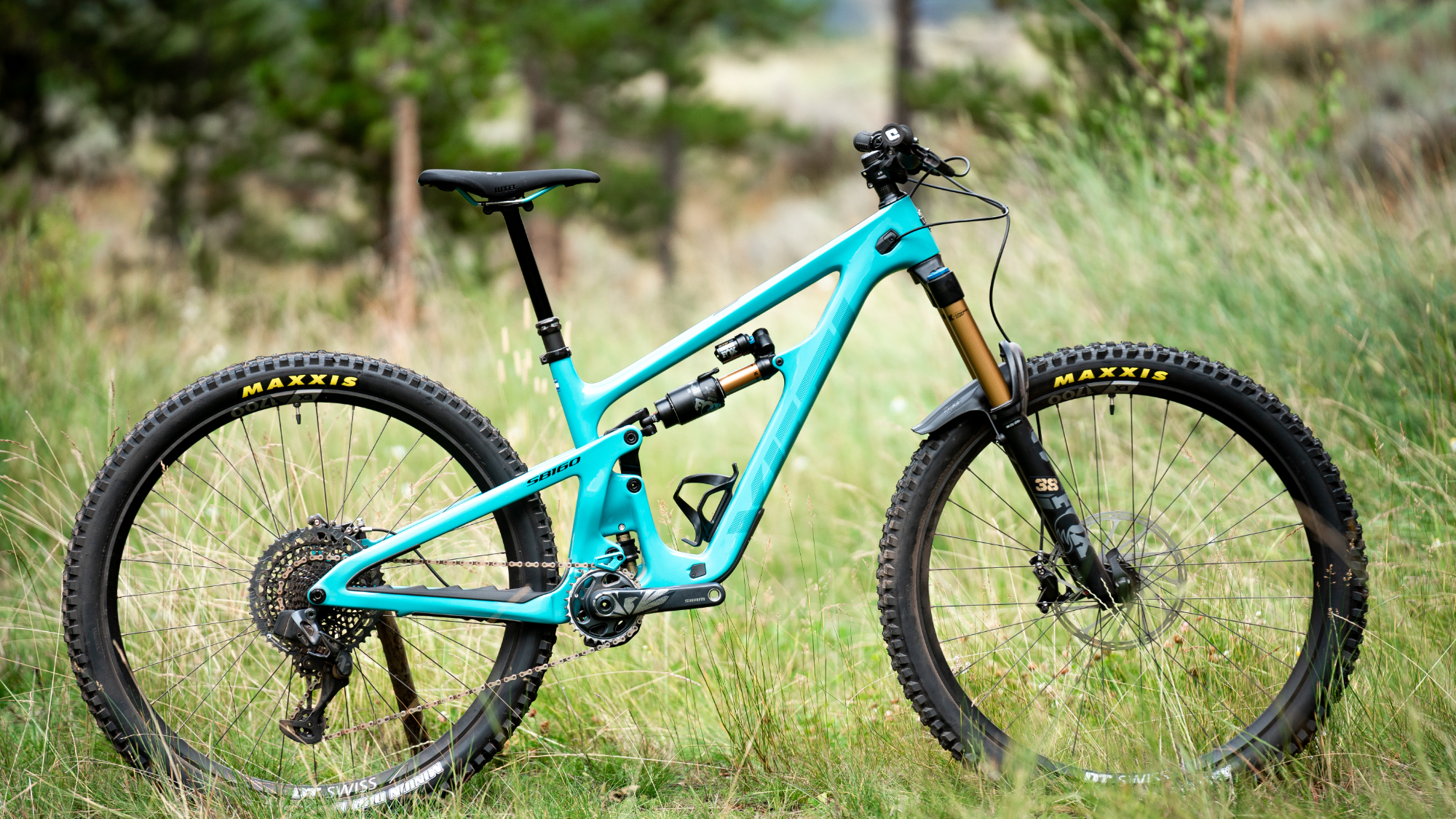
Yeti SB160 T1
Specifications
Reasons to buy
Reasons to avoid
Yeti’s first long travel 29er enduro mountain bike – the SB150 – established itself as the bike to beat both on and off the track as soon as it was launched. That was over four years ago though, so while it’s still competitive, we’re not surprised to see a new SB160 heading up a triad of new turquoise chargers.
Yeti is clearly following an ‘if it ain’t broke, just tweak it a bit rather than changing it completely' policy with the SB160. Front travel stays at 170mm thanks to a Fox 38 fork with an extra 10mm travel at the rear. Reach lengths creep out slightly and the head angle slackens by half a degree to 64 degrees. Seat angles steepen slightly (the SB150 was already a forward seat pioneer). Bigger sizes get a more vertical seat angle and longer back ends (by 2mm a size) to keep things proportionate and Yeti has added an XXL option to the range.
There are a lot of subtle but significant frame changes though. The downtube is reshaped for extra fork clearance, the seat tube has been reprofiled to take long stroke droppers (up to 200mm on L-XXL). It uses a threaded BB, SRAM’s UDH gear hanger and you get a dual density rubber belly protector, wave form upper and under chainstay protection as well as fully plumbed and secured internal cable routing. Thankfully the cabling hasn't been fed through the headset either. There’s still room for a full size bottle under the big Fox Float X2 rear shock and tire clearance is increased as well.
Yeti’s signature ‘Switch Infinity’ inflection suspension engine has been re-engineered. The lower pivot still floats on two short vertical (extra slippery) Kashima coated shafts in the belly of the bike. The collet axle Enduro Max bearings now ‘float’ for perfect alignment and are linked for increased stiffness, while black oxide coated bearings with new alloy dust caps apparently add durability too.
7. Best enduro bike for downhill
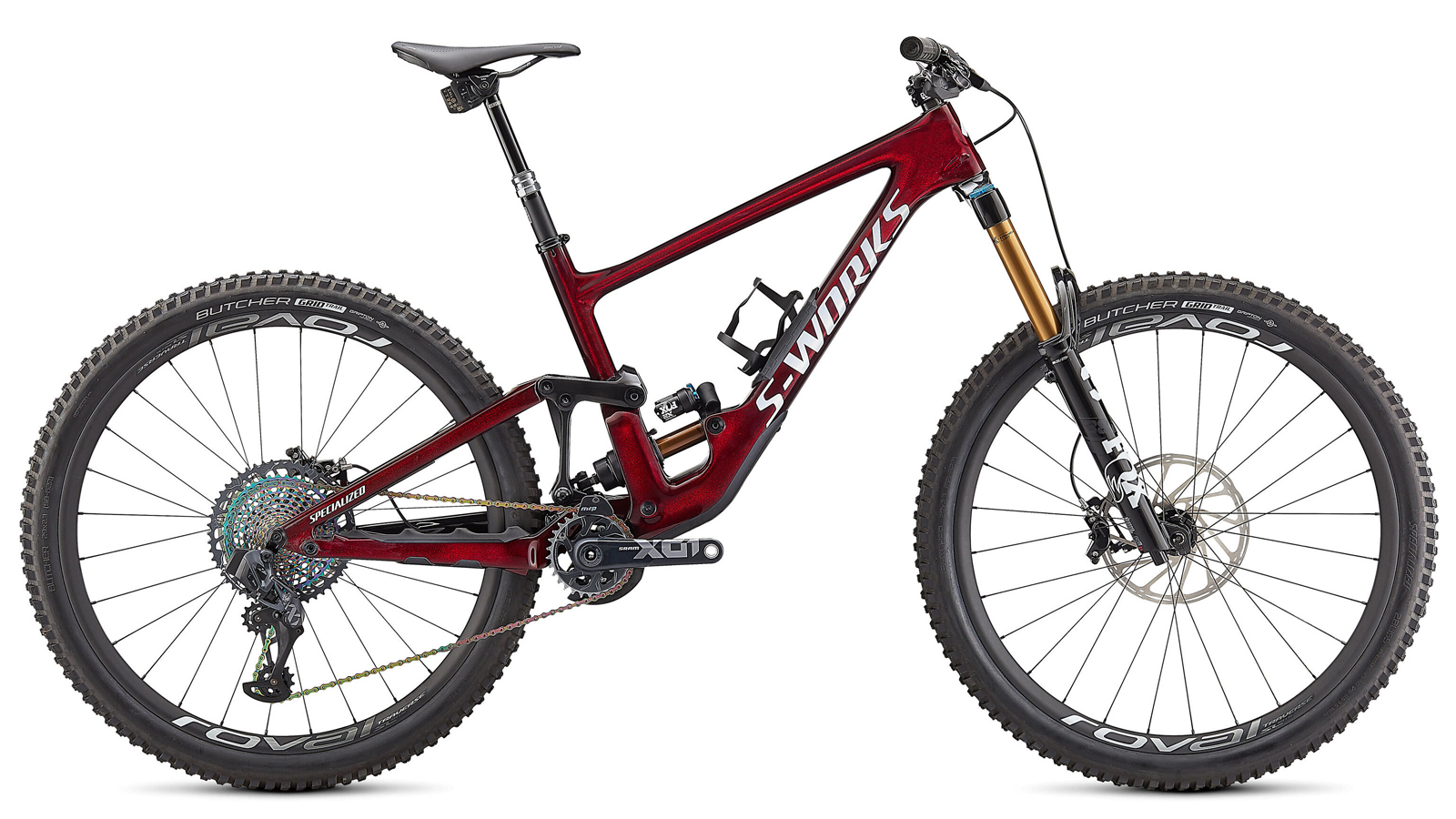
Specialized S-Works Enduro
Specifications
Reasons to buy
Reasons to avoid
Modeled from Specialized's Demo downhill bike series, the Enduro sees many of the lessons learned in suspension performance get passed across and shaped into an enduro format. Sporting 170mm of terrain-consuming suspension, the S-Works Enduro is designed to handle the roughest tracks and, for most riders, the Enduro will happily turn its hand to some downhill racing as well. A flip-chip in the shock mount changes the characteristics from a chirpy enduro bike into a gravity-hungry machine if you intend on riding laps of a bike park or an uplift day. All these descending capabilities don't mean it's a poor climber though; as the Enduro might not be a whippet back up the hill, the suspension is well controlled to eliminate pedal-induced bob and keep the rear wheel planted for traction.
Geometry is unsurprisingly at the extreme end of long, slack and low to keep everything tracking true when you're off the brakes and using the full 170mm of suspension. Specialized has done away with the traditional small, medium and large sizing, instead opting for a sizing scheme based on reach. This gives more flexibility on sizing, so if you normally ride a medium you can opt for the S3 for a more nimble ride or an S4 for increased stability.
Componentry on the S-Works model is unsurprisingly top end with SRAM AXS shifting and braking being combined with Fox suspension. For those not wanting to outlay a five-figure sum, Specialized offers Comp, Elite and Expert builds too.
8. Best budget enduro bike
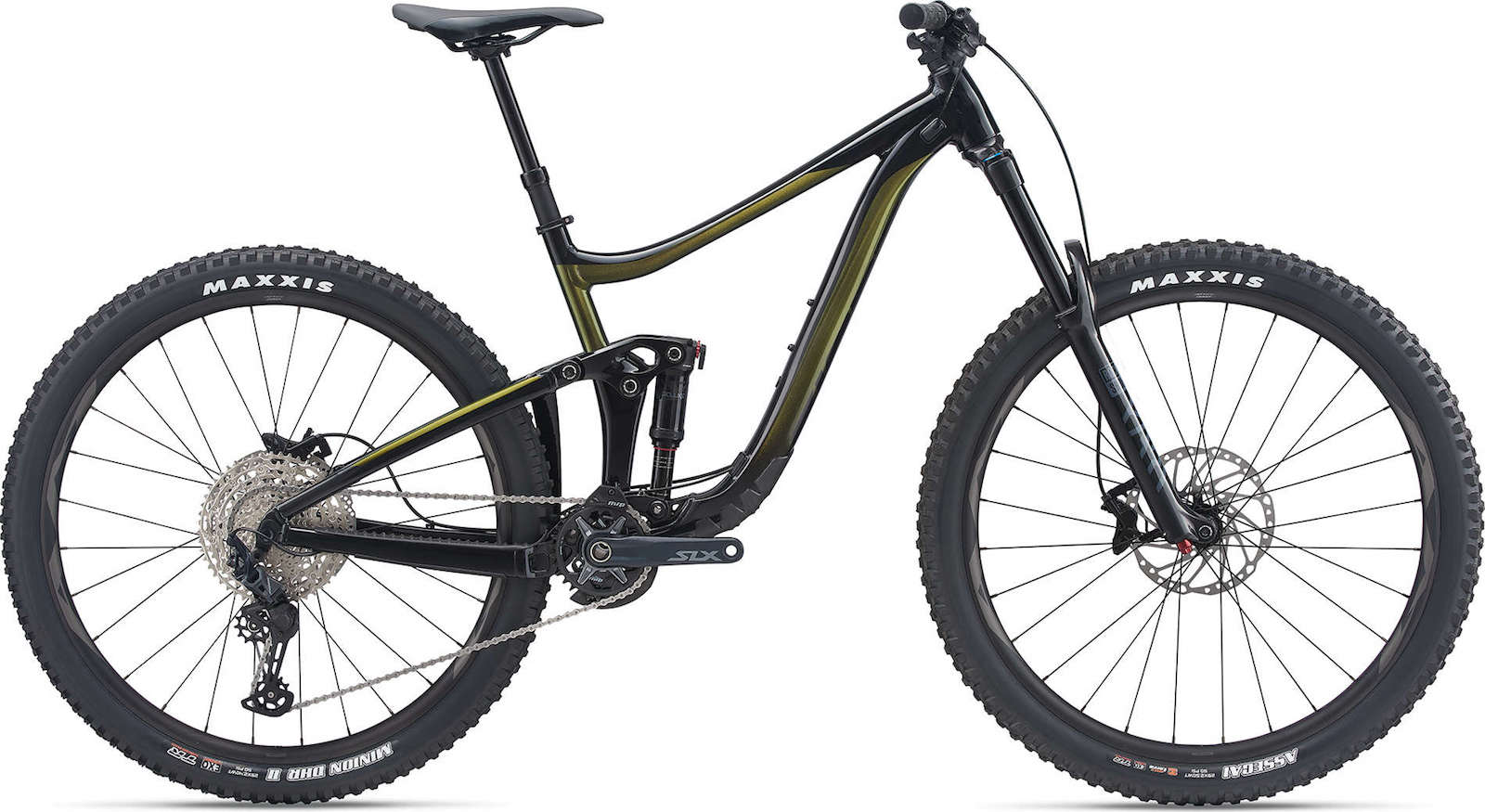
Giant Reign 29
Specifications
Reasons to buy
Reasons to avoid
The Taiwanese brand has produced a potential giant-killing bike with its 29-wheeled Reign. An evolution of the existing Reign platform, the latest model combines a hugely competent 146mm of rear suspension travel with a 170mm fork.
Other significant upgrades that the progression to bigger wheels have brought to Giant’s Reign include a trunnion mount rear shock and the choice between 42- or 44mm fork offsets, offering riders with appropriate skills a much quicker steering option.
Geometry numbers feature a meaningfully longer frame than Giant’s 27.5-inch Reign, with the new 29er stretched to 494mm of reach on a large frame. This will help with the high speeds and rough nature of modern enduro tracks. It will also improve ride quality for zipping around your local trails and making it Reign.
9. Best online only enduro bike

Canyon Strive CF 7
Specifications
Reasons to buy
Reasons to avoid
Looking at Strive CFR's geometry chart alone would probably have most enduro riders writing Canyon's enduro race bike off as too conservative. The 65.2-degree head angle, 74.4-degree seat angle and a shortish reach of 434mm for a medium look dated when compared to some of the super long and slack rigs that are available.
The Strive shines on tight technical terrain where agility from the direct handling and low bottom bracket allows the bike to be slammed through corners. Pedaling sections are a breeze too with responsive acceleration and handlebar-mounted Shapeshifter tech which allows the rider to not only change the travel on the fly but also the geometry and kinematics for ultimate pedaling performance.
That said, the Strive is an all-out race bike, designed to be fast and efficient over a full day racing, so some riders may be better served with the shorter travel but more progressive Canyon Spectral or the hard-hitting longer travel Torque. In the right hands though, the Strive is a dominating enduro race bike.
How to choose the best enduro mountain bikes
How much should I spend on an enduro mountain bike?
The sky is really the limit when it comes to the very best enduro bikes. Some of them are very similar to the models raced by the pros and come with a very hefty price tag as you'd expect. Fortunately, there are cheaper options around though, Giant's Reign being just one great value bike.
For a proper enduro capable-bike, you'll need to spend three to four thousand US dollars or UK pounds. The more cash you throw at the bike, the better the spec, more sophisticated the frame construction and, typically, the lower the weight.
What's the best frame material for enduro mountain biking?
While frame material is important, it doesn't necessarily make as much of a difference with enduro bikes as in other cycling disciplines. Carbon allows frames to be built lighter and stiffer, however there has been a noticeable resurgence of aluminum frames which are just as capable. The advantage of aluminum is that it's a lot cheaper to produce which leaves more money for better components such as suspension, wheels, brakes or tires where performance enhancements will be more pronounced.
What is the best enduro suspension?
Rear suspension design and geometry are the most important features worth considering when evaluating an enduro bike. With special stages that can run for far longer than expected (up to three miles), the issue of shock fade, due to overheating, is a real concern for enduro riders. Therefore, a frame that offers sufficient shock clearance to run a high-volume air shock (with a piggyback reservoir) or coil shock, is vital. While air and coil shocks have their own characteristics, top-end frames are generally built with suspension systems that are designed to work with a specific style of shock. Some frames can be enhanced by retrofitting a different shock but the possible effects should be researched first in case your upgrades don't complement the suspension kinematics.
What geometry is best for enduro?
The enduro category, with its requirements for all-day riding endurance and extreme terrain taming ability on descents, has revolutionized mountain bike geometry. Longer bikes with increasingly extreme angles are the defining trend, optimizing the theory that an elongated wheelbase is inherently more stable.
As geometry is based on many other factors such as reach, bottom bracket drop and fork offset, what might be right for you and your trails will likely be different for others. Generally, a head angle slacker than 66-degrees and a seat tube steeper than 74-degrees shows a bike's intent for descending, although most enduro bikes will push well beyond these figures.
Many bikes also feature flip-chips for their suspension rocker arms or mounting hardware, which allow for small geometry adjustments – and those might make all the difference for your riding.
What is the best wheel size for an enduro mountain bike?
Originally, 27.5-inch (or 650b) wheels were the default option, striking a balance between the old standard 26-inch and the fast but more cumbersome 29er cross country bikes. Much has changed and as geometry has continued to evolve 29er wheels have become equally popular and have proved very successful on the enduro racing circuit.
While some will argue that the performance benefits of each are significant, unless you are racing, the difference is likely to be much less noticeable thanks to advances in geometry and better components. Due to a 29er's larger diameter, they roll better over rougher terrain as well as generally maintaining better momentum. A 27.5-inch wheel on the other hand allows a shorter chainstay length for improved cornering on tight terrain. It can also be argued that 27.5-inch wheels are lighter and stronger due to their smaller size.
27.5-inch enduro bikes are rare now, but lots of brands now offer bikes in a 'best of both' mullet wheeled option with a 29in wheel up front and 27.5in at the rear.
How we test enduro mountain bikes
All the enduro bikes tested here have been ridden in a wide range of conditions, from bone dry dusty tracks to hammering down rain-soaked trails where grip is at a premium. We also test the bikes over a range of trail conditions, from uplift DH and enduro venues to pedaling steep natural runs. We ensure to test the bikes over a number of months to see how they fare over time and you'll often find us switching bikes mid-ride to make comparisons between different models.
Meet the tester

Guy's been testing and writing about mountain bikes since the early nineties and we're betting than he's tested more MTBs than anyone else in the UK. He's no stranger to enduro racing either and has raced in a multitude of different events.

Guy Kesteven has been working on Bike Perfect since its launch in 2019. He started writing and testing for bike mags in 1996. Since then he’s written several million words about several thousand test bikes and a ridiculous amount of riding gear. He’s also penned a handful of bike-related books and he reviews MTBs over on YouTube.
Current rides: Cervelo ZFS-5, Specialized Chisel, custom Nicolai enduro tandem, Landescape/Swallow custom gravel tandem
Height: 180cm
Weight: 69kg
- Rich OwenEditor, BikePerfect
